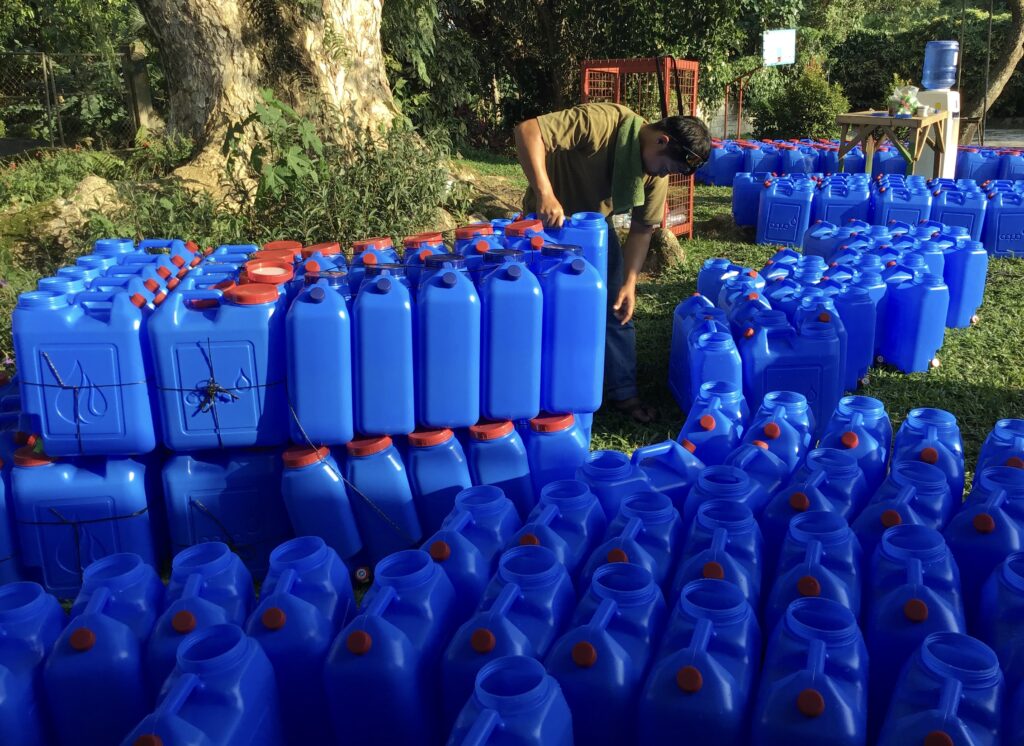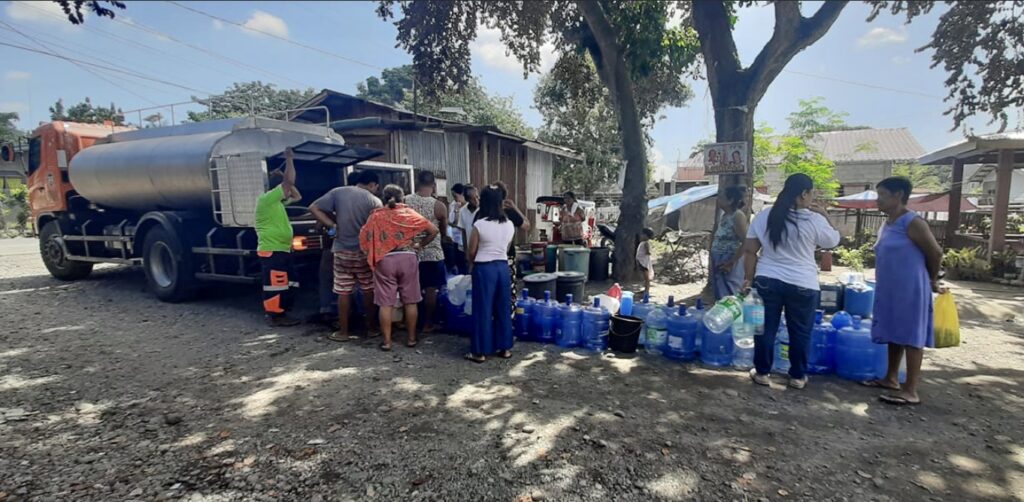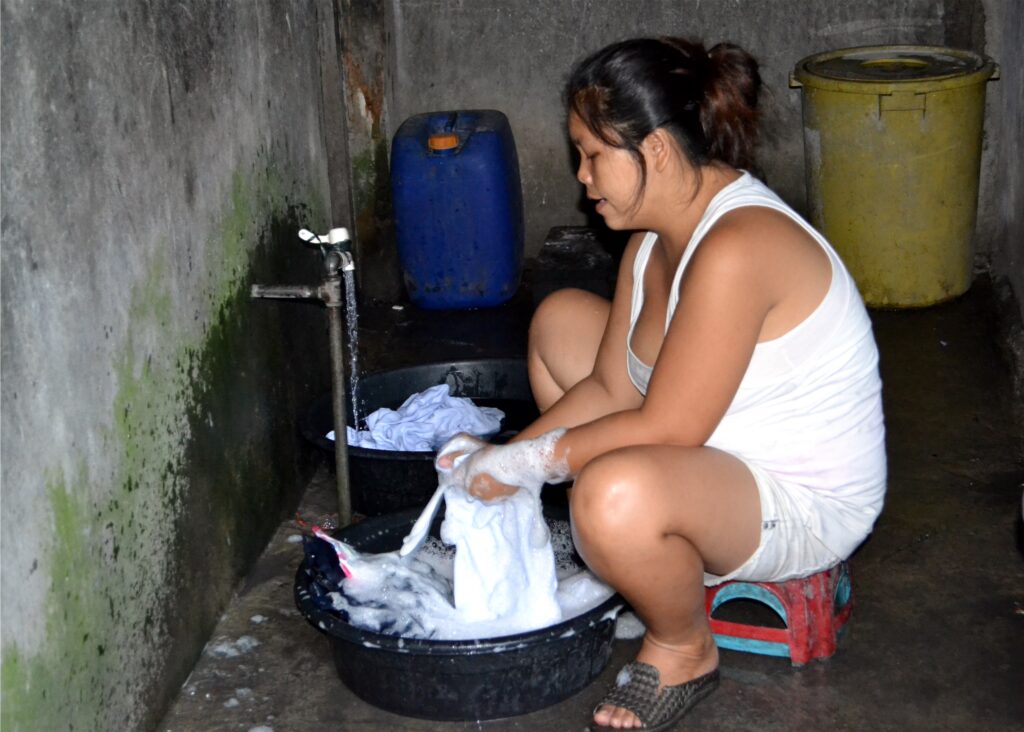Text and Photos by Henrylito D. Tacio
“It’s simply a question of survival. Thirst for water is an ignition to violence.” — Meir ben Meir, former Israeli water commissioner
***
“A water crisis is likely to hit around the year 2050.” This was the unanimous warning from the first World Water Forum participants held in Marrakech, Morocco, 17 years ago.
But no one seems to heed the warning. All over the world, because of overuse, waste, and neglect, freshwater resources — lakes, rivers, and aquifers — are being exhausted or polluted at an alarming rate. Water demand — for industrial, agricultural, and domestic uses — continues to rise rapidly as the global population and economy keep growing.
“Over the last three centuries, the growth in the volume of water withdrawn from freshwater sources for human use has been much more rapid than the growth in population,” reports the Geneva-based World Health Organization.
This is true in the Philippines, which, despite being surrounded by bodies of water, is home to 100 million people.
In the 1950s, the Philippines had as much as 9,600 cubic meters of clean water per person, according to Dr. Rafael D. Guerrero, former head of the Philippine Council for Aquatic and Marine Research and Development. Four decades later, Filipinos must make do with little more than a third for that volume – 3,300 cubic meters per capita.
Recently, the Philippines ranked second from the lowest among Southeast Asian countries in terms of per capita water availability per year with only 1,907 cubic meters, according to a World Bank report. Thailand was at the bottom, with 1,854 cubic meters. Vietnamese had more than twice what Filipinos get: 4,591 cubic meters.
In most parts of the country, the growing population is straining water resources. During the time of Mauricio Domogan as the mayor of Baguio, the city’s water district reportedly could only supply one-fifth of the city’s population of half a million. In reality, the city can only accommodate 25,000 residents.

“But because of the growing number of transients and the invasion of squatters resulting from the closure of several mining companies, the population has grown considerably,” Domogan was quoted as saying.
The Philippines is not yet what hydrologists call a “water stressed nation.” That label applies when annual water supplies drop below 2,740 liters per citizen. Among the countries which are listed as such are sub-Saharan nations like Egypt and Saudi Arabia.
While the country is still not “water stressed,” it already has areas suffering from “water scarcity.” Four river basins — Pampanga, Agno, Pasig-Laguna, and Cebu’s island — are experiencing water scarcity.
During summer months, many Metro Manila residents — home to more than 10 million people — are coping with a “water supply crisis.” The cities of Cebu and even Davao have already experienced the same “status.”
The three major cities — along with six others (Baguio, Angeles, Bacolod, Iloilo, Cagayan de Oro, and Zamboanga) — were identified by a study done by the Japan International Cooperation Agency in 1991 to be “water-critical areas.”
In “Handbook Philippines,” contributing author Sandra Volpp wrote: “There are ample freshwater reserves all over the country. One-third of the available freshwater is sufficient to cover demand nationwide. But many of these reservoirs are contaminated or polluted.”
More than 400 rivers and streams have been identified in the Philippines, but “only 36% are suitable sources of potable water supply, while 60% of the groundwater is contaminated with coliform bacteria, mostly from garbage dumps,” Volpp penned. “This has led to an increase in water-borne diseases, such as cholera, diphtheria, typhoid fever, dengue fever, and amoeba infections.”
The problem is even greater in large cities. “A large number of households are not connected to canalization, so their wastes are directly channeled into rivers and the sea,” Volpp noted. “This problem is exacerbated in the big cities.”

Volpp also wrote: “Water services remain inadequate in many areas, which is why many people revert to deep wells. This leads to a sinking groundwater level, to increased salinity, and ultimately, to a shortage of potable water.”
A water crisis is inevitable as forests are fast disappearing. “We cannot talk of providing sustainable water to the people unless we protect the sources of the commodity — the watersheds,” said Elisea Gozun, who used to be the head of the Department of Environment and Natural Resources.
In a report a couple of years ago, the environment department said that 90% of the 99 watershed areas in the country were “hydrologically critical” due to their degraded physical condition.
Massive destruction of the once-productive forested watersheds by loggers — both legal and illegal — and uncontrolled land use from mining, overgrazing, agricultural expansion, and industrialization have contributed to water depletion.
“Land use and vegetative cover in the watershed are very important because they affect water flow and water quality,” explains Patrick Durst, senior forestry officer of the Food and Agriculture Organization’s regional office in Bangkok, Thailand.
Changing weather patterns worldwide also contribute to the crisis. One such thing is the El Niño phenomenon, which is associated with unusually warm water that occasionally forms across much of the tropical eastern and central Pacific. In weak to moderate El Niño events, rainfall tends to be somewhat less than normal.
“Of all the social and natural crises we humans face, the water crisis is the one that lies at the heart of our survival and that of our planet Earth,” surmised Koichiro Matsuura, former director-general of the United Nations Educational, Scientific and Cultural Organization.

“Water isn’t just a commodity. It is a source of life,” says Sandra Postel, director of the Massachusetts-based Global Water Policy Project. Ideally, a person should have at least 50 liters of water each day to meet basic needs – drinking, food preparation, cooking and cleaning up, washing and personal hygiene, laundry, and house cleaning.
Postel believes water problems will trail climate change as a threat to the human future. “Although the two are related, water has no substitutes,” she explains. “We can transition away from coal and oil to solar, wind and other renewable energy sources. But there is no transitioning away from water to something else.”
Water covers over 70 percent of the earth’s surface and is a major force in controlling the climate by storing vast heat quantities. About 97.5 percent of all water is found in the ocean, and only the remaining 2.5 percent is considered freshwater. Unfortunately, 99.7 percent of that fresh water is unavailable, trapped in glaciers, ice sheets, and mountainous areas.
Water is drawn in two fundamental ways: from wells, tapping underground sources of water called aquifers, or from surface flows – that is, from lakes, rivers, and man-made reservoirs. Water is drawn in two fundamental ways: from wells, tapping underground sources of water called aquifers, or from surface flows – that is, from lakes, rivers, and man-made reservoirs.
“World demand for water doubles every 21 years, but the volume available is the same as it was in the Roman times,” observes Sir Crispin Tickell, the former British ambassador to the United Nations and one of the organizers of the 1992 Earth Summit in Rio de Janeiro. “Something has got to give.”

